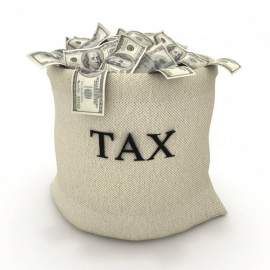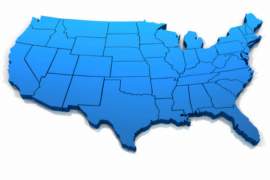
Limitations on Property Taxes You Should Know

As of 2007, only five states in the U.S. have zero limitations on some aspect of real property tax. For the remaining forty five, there is at least one of the common limitations applicable in regards to real property taxes. Real property refers to land, improvements made on the land, or anything attached to the land, such as the building of houses or factories.
In essence anything that is immovable on a piece of land is considered real property. Real property tax is the largest source of revenue for local governments, however, drastic changes in property value or the housing market will highly effect the rates at which individuals pay. The relationship between housing prices and the ad valorem taxation model, is very sensitive. When the market dips or spikes the amount of tax an individual will pay on his property greatly shifts. Limitations on real property taxes are created to limit this shift.
In 1978, real property taxes in California rose to levels of absurdity. Taxpayers started a revolt, and refused to pay such exorbitant fees. Under pressure from its citizens, proposition 13 was adopted by the California congress. This much-needed legislation restored property values back to their 1975 levels, and instituted a cap real property tax for subsequent years. Proposition 13 also placed a ceiling on how property value could be assessed, and restricted annual increases of more than 2%.
Statewide limitations on real property tax provides a direct constraint for an individuals payments. State laws in regards to the ad valorem tax vacillate throughout the nation; the federal government has awarded each state power to govern the land within its borders.
There are five common limitations imposed on real property taxes, and whichever limitation yields the lowest payment for the individual will be applied to the party. Each form of limitation applies a floor and ceiling on revenue and tax rate limits. The regulations explicitly limit local government behavior. Examples of common forms of limitations are as follows:
The 1% constitutional limit: The 1% rule has been adopted by many states, the percentage may vary but the justification is the same. The percentage rule is the primary limitation placed on real property tax. The provision limits the total regular property tax levy to a maximum percentage per $1,000. For a 1% rule the levy would be taxed at a maximum of $10 per $1,000 of the total market value of the property.
Statutory maximum rate for districts: establishes a maximum levy rate for counties, cities, and towns. This statute regulates jurisdictions specifically and not on a state level. The statute establishes a maximum aggregate rate on average of .05%.
A 101% limit-A 101% rule established a limitation on the amount to which property taxes can increase annually. Limitations each year for most districts are around 101%, thus if a district has real property taxes of 1,000,000 the following year can only raise to a level of $1,001,000.
The 4% rule-The property tax limitation adopted by New York. Under this rule property taxes can only increase annually by a rate of 4% or 120% the CPI. The CPI, or consumer price index is an economic tool used to track inflation rates.


















